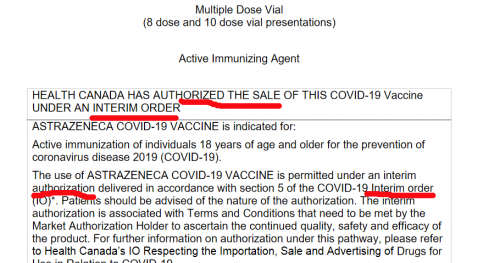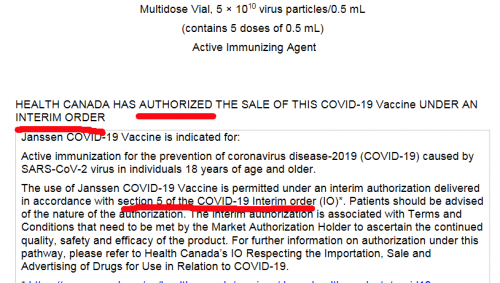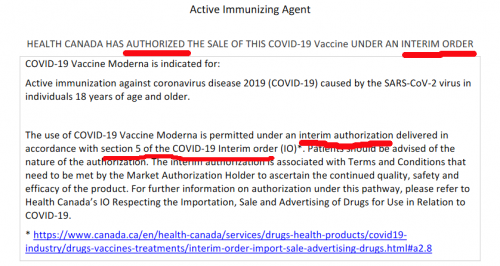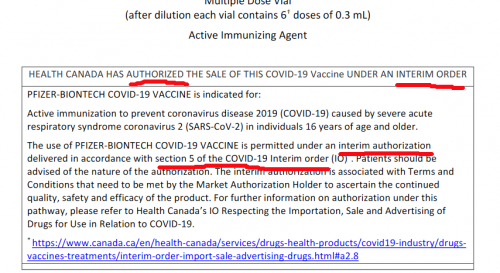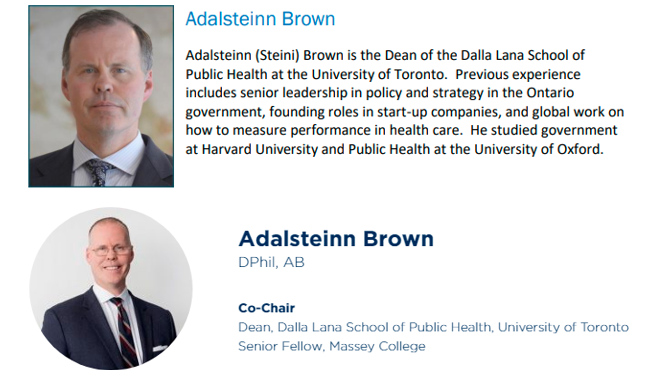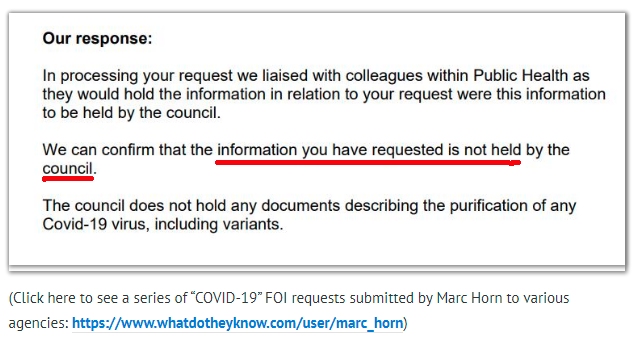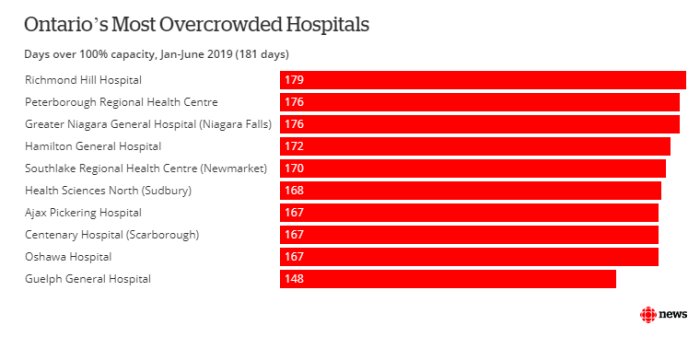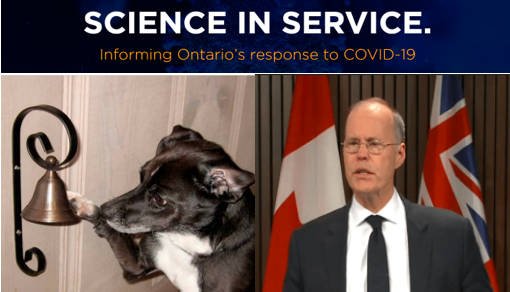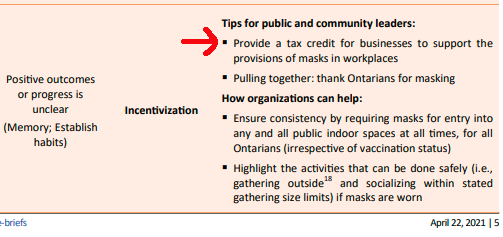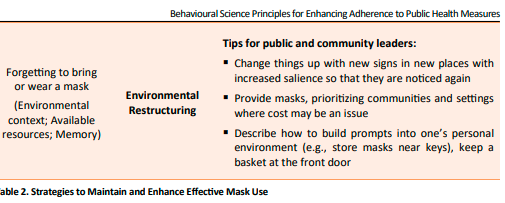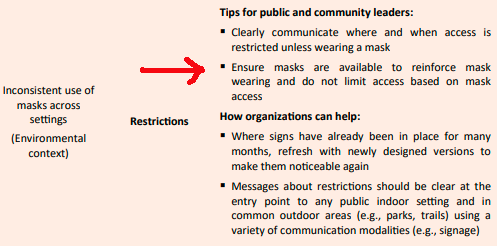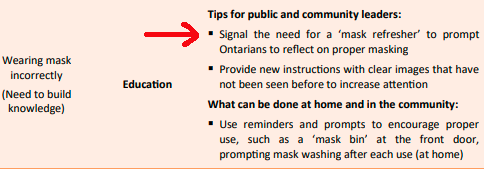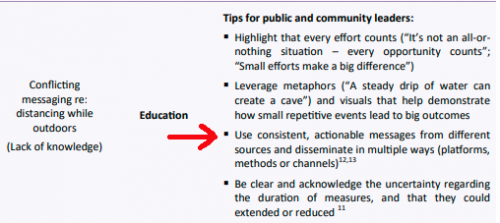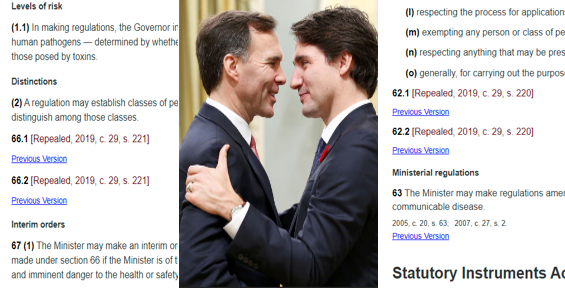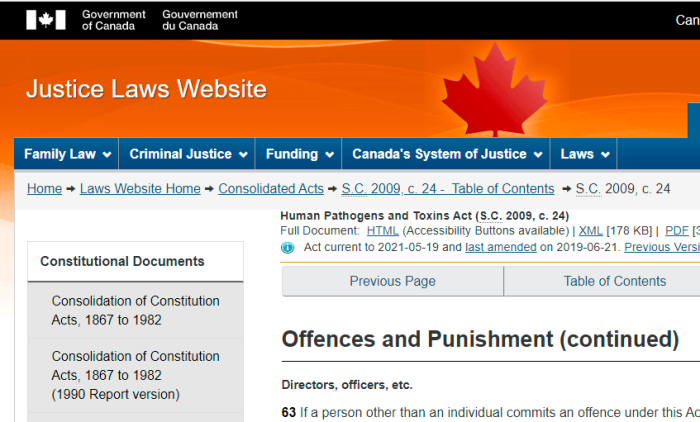
Melissa Lantsman helped get Doug Ford elected in 2018. She lists her position as the “War Room Director & Spokesperson” for the campaign. She left shortly after, and began lobbying the very Government she helped install. There are others who are in similar positions, as this topic has been addressed before.
The organization of interest here is the Ontario Pharmacists Association. They were involved in 2 pieces of legislation.
The first, Bill 160, was passed by the Wynne Government but never implemented. It would have forced disclosure of financial interests of doctors who received money to push certain drugs. While passed in Parliament, it was never given Royal Proclamation, and hence, has no legal effect. This was covered previously.
The second, Bill 132, repealed annual disclosure requirements for the Health Minister concerning drug programs. These reports were to be made publicly available. More on this later.
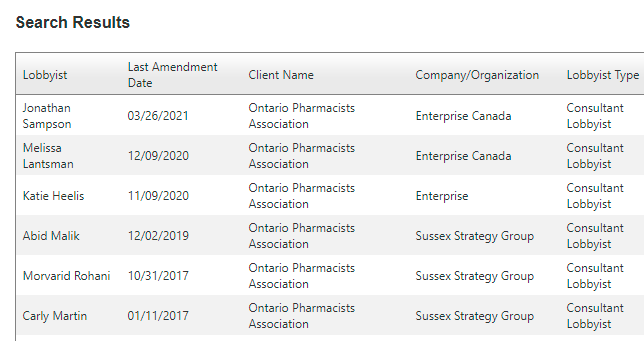


In recent years, there have been 6 documented meetings between the Ontario Government (both Liberal and Conservative Administrations), and the Ontario Pharmacists Association. According to the Registry, the OPA has also been receiving grants from the Government. This included $190,604 in the fiscal year of 2018, and another $381,200 in 2020.
- Jonathan Sampson
- Melissa Lantsman
- Katie Heelis
- Abid Malik
- Morvarid Rohani
- Carly Martin
Now, who are these people?
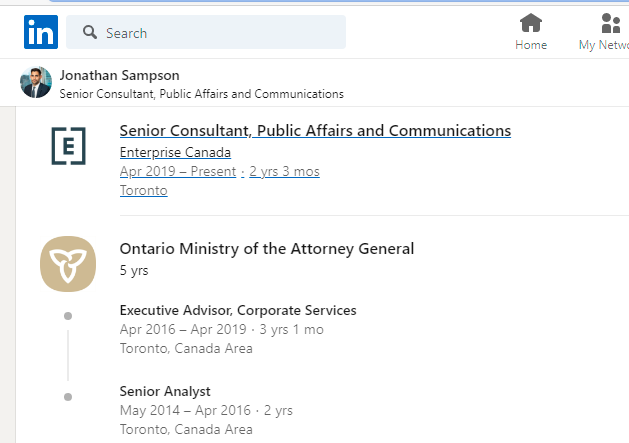
Jonathan Sampson was a high ranking bureaucrat with the Office of the Attorney General in Ontario, under both the Wynne and Ford Governments. He then joined Sussex Strategy Group and became a lobbyist.

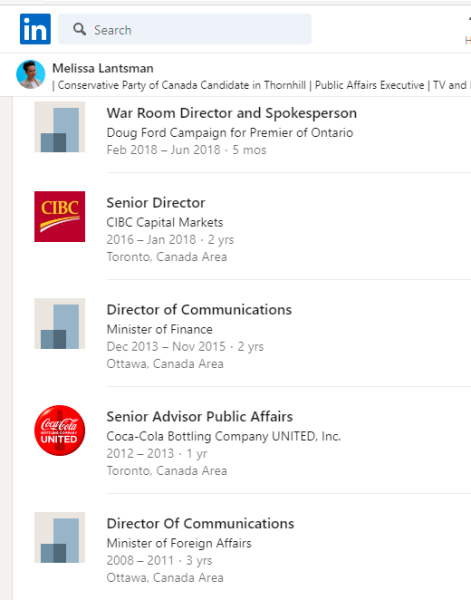
Melissa Lantsman is currently a Director at the Michael Garron Hospital. This is where Michael Warner, the infamous lockdown doctor, also works.
Lantsman spent 3 years as a spokeswoman for the Foreign Affairs Office of Canada, and another 2 in the Finance Ministry, before getting into Ontario politics. She helped get Doug Ford elected in 2018, and is now running to be a Federal Candidate in the next election, whenever that is.
She was also one of several lobbyists for Walmart in 2020. She was trying to keep the retail giant open while others were allowed to die.
It doesn’t appear that Lantsman’s switching between politics and lobbying will be any issue. Amber Ruddy, the Secretary of the National Council of the CPC is an active pharma lobbyist. Erin O’Toole used to be a lobbyist for Facebook.

Katie Heelis used to be the “Issues Manager” for the Ontario Minister of Health, back under the regime of Kathleen Wynne. Afterwards, she became a lobbyist, taking on clients such as Shoppers Drug Mart.
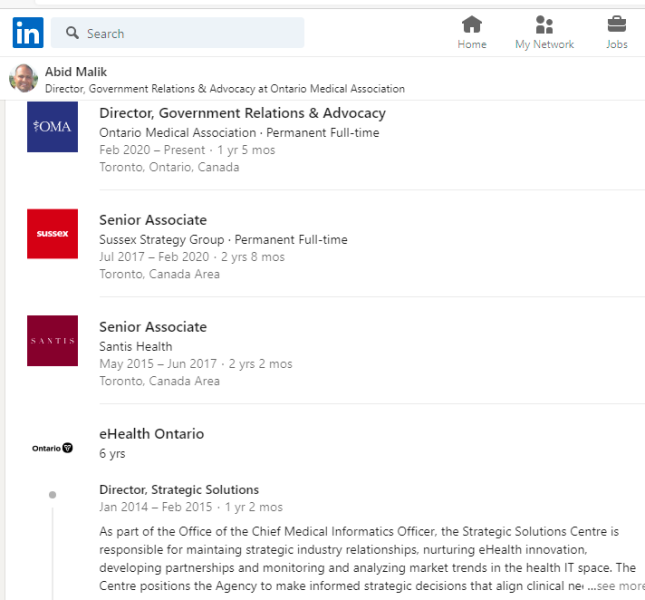
Abid Malik spent several years working for the Ministry of Health under the regimes of McGuinty and Wynne. He moved on to lobbying, and is now an official at the Ontario Medical Association.
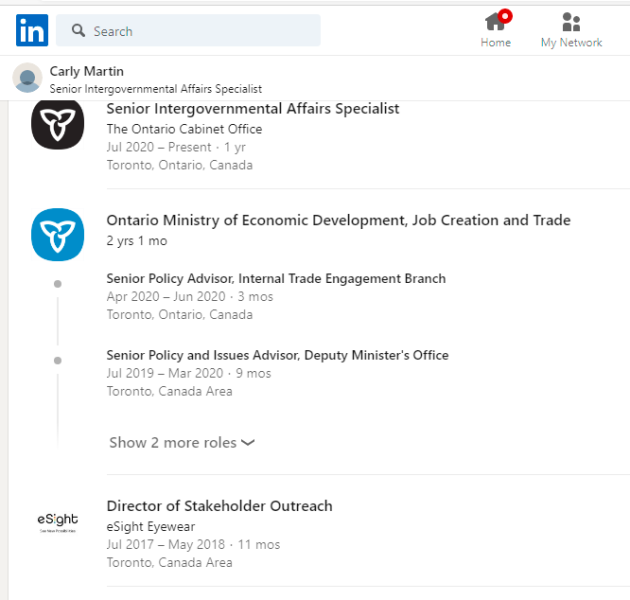
Carly Martin sort of went the other way. She a lobbyist, and later came to work for the Ford Government. Since July 2020, she has worked in the Cabinet Office, and presumably has direct access to Ford.
Getting back to the issue of Bill 132, what were the effects of passing it?

Bill 132 was an omnibus Bill (aren’t they all?) but buried in Schedule 11 was the notice that a part of the Ontario Drug Benefit Act would be repealed. This isn’t some minor thing, but has huge implications.
Lobbying Activity
Tell us about your current lobbying activity. Complete all that apply. You must choose at least one option:
Legislative proposal Yes
Describe your lobbying goal(s) in detail. What are you attempting to influence or accomplish as a result of your communications with Ontario public office holders?
OPA will be advocating for the removal of unnecessary regulatory burden in the pharmacy sector as defined as the goal through Bill 132, Better for People, Smarter for Business Act, 2019
Going through the records of the Lobby Registry, it’s explicitly stated that this was a reason for speaking to Public Officials. There’s no guesswork involved.
Executive officer
.
1.1 (1) The Lieutenant Governor in Council shall appoint an executive officer for the Ontario public drug programs. 2006, c. 14, s. 7.
.
Functions and powers
.
(2) Subject to this Act and the regulations, it is the function of the executive officer, and he or she has the power, to perform any functions or duties that he or she may have under this Act and the regulations, under the Drug Interchangeability and Dispensing Fee Act and its regulations and under any other Act or regulation, and without in any way restricting the generality of the foregoing,
.
(a) to administer the Ontario public drug programs;
(b) to keep, maintain and publish the Formulary;
(c) to make this Act apply in respect of the supplying of drugs that are not listed drug products as provided for in section 16;
(d) to designate products as listed drug products, listed substances and designated pharmaceutical products for the purposes of this Act, and to remove or modify those designations;
(e) to designate products as interchangeable with other products under the Drug Interchangeability and Dispensing Fee Act, and to remove or modify those designations;
(f) to negotiate agreements with manufacturers of drug products, agree with manufacturers as to the drug benefit price of listed drug products, negotiate drug benefit prices for listed substances with suppliers, and set drug benefit prices for designated pharmaceutical products;
(g) to require any information that may or must be provided to the executive officer under this Act or the regulations or any other Act or regulation to be in a format that is satisfactory to the executive officer;
(h) to make payments under the Ontario public drug programs;
(i) to establish clinical criteria under section 23; and
(j) to pay operators of pharmacies for professional services, and to determine the amount of such payments subject to the prescribed conditions, if any. 2006, c. 14, s. 7.
.
Report
.
(3) In every year,
(a) the executive officer shall make a report in writing to the Minister concerning the Ontario drug programs; and
(b) the Minister shall publish the report within 30 days of receiving it. 2006, c. 14, s. 7
This is how the Ontario Drug Benefit Act used to look. See the archive. However, the passage of Bill 132 repealed 1.1(3) which would have forced annual reporting to the Health Minister.
Also noteworthy: those annual reports would have been made public by law. That is not the case, as the pharmaceutical industry seems to oppose such transparency. Of course, this is done under the guise of eliminating burdens on businesses. The truth is never clearly stated.
And Bill 160 (which Wynne and Ford never fully enacted), would have forced disclosure of payments when it came to pushing medications. It’s been in limbo since 2017. Have to wonder who they really work for.
(1) http://lobbyist.oico.on.ca/Pages/Public/PublicSearch/
(2) https://lobbycanada.gc.ca/app/secure/ocl/lrs/do/advSrch
(3) https://lobbycanada.gc.ca/app/secure/ocl/lrs/do/advSrch?V_SEARCH.command=navigate&time=1623728162394
(4) https://archive.is/cZVsT
(5) https://www.linkedin.com/in/jonathan-sampson/
(6) https://www.linkedin.com/in/melissalantsman/
(7) https://archive.is/VsG0V
(8) https://www.linkedin.com/in/katieheelis/
(9) https://archive.is/GIOQ0
(10) https://www.linkedin.com/in/abidmalikto/
(11) https://archive.is/7P9lC
(12) https://www.linkedin.com/in/carly-martin/
(13) https://www.ola.org/en/legislative-business/bills/parliament-42/session-1/bill-132#BK14
(14) https://www.canlii.org/en/on/laws/stat/rso-1990-c-o10/132589/rso-1990-c-o10.html
(15) https://www.canlii.org/en/on/laws/stat/rso-1990-c-o10/latest/rso-1990-c-o10.html
Like this:
Like Loading...

